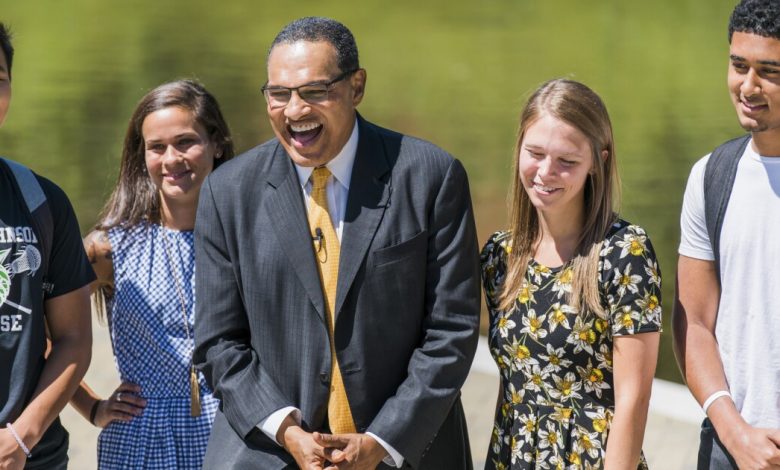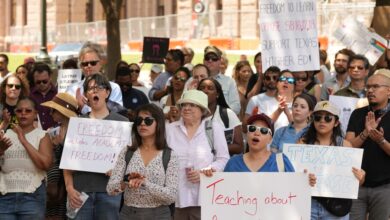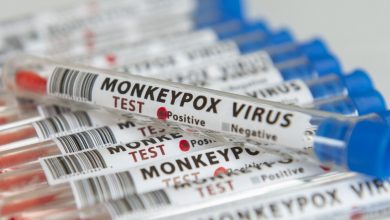Can $1.5 Billion Help Diversify the Sciences?

[ad_1]
The Howard Hughes Medical Institute is planning to spend $1.5 billion over the next 20 years on funding early-career academic scientists who say they’ll run diverse and welcoming labs. The effort, announced on Thursday, will be one of the largest aimed at diversifying the scientific work force, dwarfing other early-career programs led by other private funders and the federal government.
“You need revenue for the revolution, and HHMI is certainly putting down some serious ducats,” said Ebony O. McGee, a professor at Vanderbilt University who studies systemic discrimination in science and is not involved in the new program. “If you’re putting down $1.5 billion, something significant’s going to happen.”
Funded scientists will be called Freeman Hrabowski scholars, after the longtime president of the University of Maryland at Baltimore County, who is known for co-founding a model program that sends Black and other underrepresented undergraduates into science careers. That 34-year-old initiative, called the Meyerhoff Scholars Program, has improved retention and academic outcomes for Black scientists at UMBC, and other colleges are trying to replicate its successes.
With $1.5 billion on the table, each Freeman Hrabowski scholar may receive up to $8.6 million over 10 years to fund their salaries and research. Over the next two decades, the institute hopes to fund 150 faculty members in the biomedical sciences who are on the tenure track and have been running their labs for four years or less.
The idea is that these faculty members will help usher in a new generation of scientists who better reflect the country’s diversity and full talent pool.
“You will be selected as a Freeman Hrabowski scholar if you have a plan for building a lab that cares about diversity, cares about a great mentoring environment. A happy lab. A diverse lab,” said Leslie B. Vosshall, vice president and chief scientific officer for the Howard Hughes Medical Institute. “That lab becomes this environment where you train generations of young scientists who may not have Freeman Hrabowski scholar funding in the future, but they sure will have the recipe. They’ll understand: How do you build a happy and diverse lab where minoritized scientists will thrive and persist?”
Notably, the program is not only for faculty members who belong to groups that are underrepresented minorities in science, such as women and Black, Hispanic, and Native American academics. Freeman Hrabowski scholars will be employees of HHMI, and U.S. law forbids employers from choosing workers based on their race, sex, and certain other characteristics.
Instead, the institute plans to pick scholars using a two-step process. First, reviewers with expertise in diversity and inclusion will read applicants’ answers to questions about how they plan to recruit and retain diverse lab members. Only after applicants have made that first cut will scientific reviewers evaluate the candidates’ research proposals. The institute hopes to choose about 30 new scholars a year, every other year.
“You can be of European descent and be a great Freeman Hrabowski scholar,” Vosshall said. “It’s not a quota program.”
Hrabowski, who is retiring soon as UMBC’s president, agreed. “What I love about this is it’s saying we all have to be a part of this initiative,” he said. “It’s not just about minorities producing minorities. It is about first-rate scientists, women and men, who are committed to inclusive excellence.”
Hrabowski had no part in the program’s design or funding. The HHMI board asked him if they could name the program after him, after it was finalized. He has previously consulted with the institute on its diversity programs aimed at undergraduates.
Outside of the institute, experts were hopeful about the program’s potential impact.
“Many programs focus on recruitment, and they don’t focus on retention,” McGee said, “so I’m excited to see that this program is focused on retention.”
Andrew G. Campbell is dean of Brown University’s graduate school and has led a National Institutes of Health-funded initiative aimed at recruiting and retaining minority students in doctoral programs. He pointed to the well-documented ongoing racial disparities in who receives NIH grants, which can be essential to advancing science faculty members’ careers. To the extent that Freeman Hrabowski scholar money goes to support minority scientists, it could contribute to closing those gaps, he said.
“Insufficient time and insufficient resources is the enemy of any scientist,” he said. “This gives these investigators that protected time to really do their work.”
Recognizing that underrepresented faculty members are often asked to do extra service work — for example, meeting prospective students and serving on committees — the Freeman Hrabowski scholar program has a mechanism aimed at protecting participants’ time. HHMI will make clear to departments that Freeman Hrabowski scholars are to spend 80 percent of their working hours on science.
“This individual will be bringing enormous resources into the department. You don’t have to pay their salaries for 10 years. They’ll be getting the equivalent of two or three NIH grants every year,” Vosshall said. “So leave them alone. Tell us how you’re going to diversify the department without leaning on them.”
One potential pitfall that McGee identified was in the selection process. “People are really becoming very sophisticated in knowing what to say,” she said. “Nobody in 2022 is going to say that they are not for diversity” — but that doesn’t mean they’ll be effective advocates. McGee would want to see that Freeman Hrabowski scholars have a demonstrated history of working on diversity issues. HHMI’s policy of having experts in diversity, equity, and inclusion review applications will help, she said.
McGee also wished to see more support for aspiring scientists even before they land a tenure-track position. The Howard Hughes Medical Institute has programs for encouraging minority undergraduate and graduate students to persist in science careers, but the bulk of the $2 billion it has pledged toward diversity and inclusion is going toward Freeman Hrabowski scholars. Vosshall said that was because the institute hasn’t previously focused its efforts on the early-career stage.
Applications are open now.
[ad_2]
Source link






